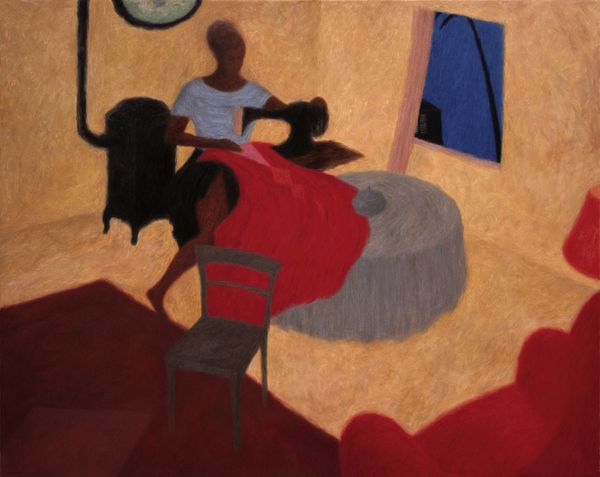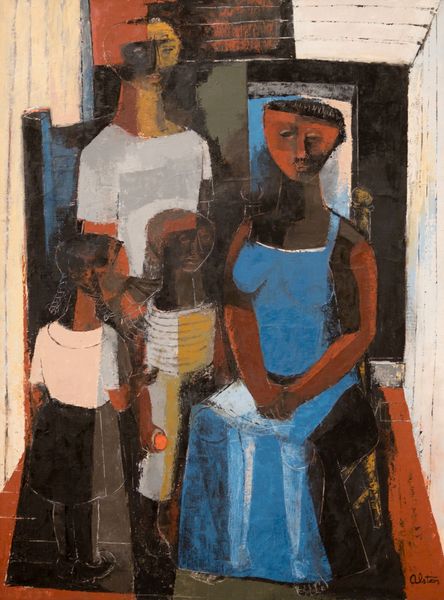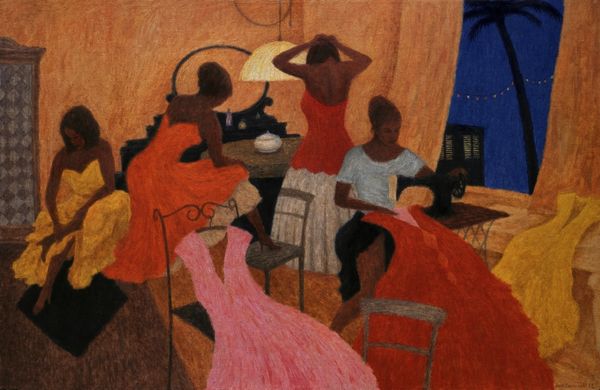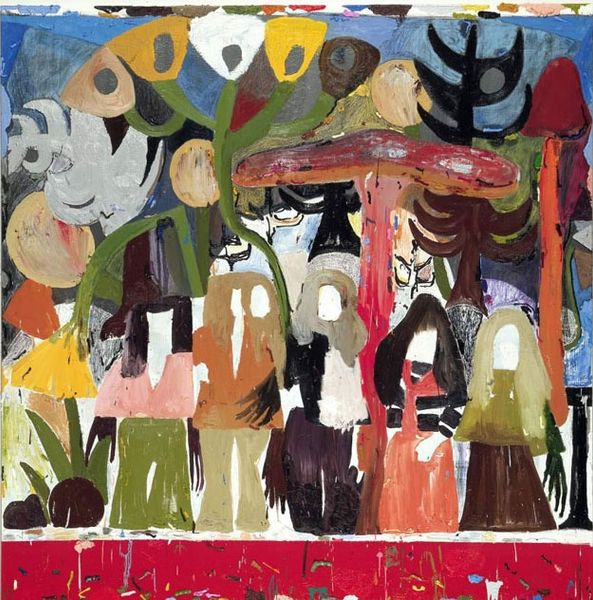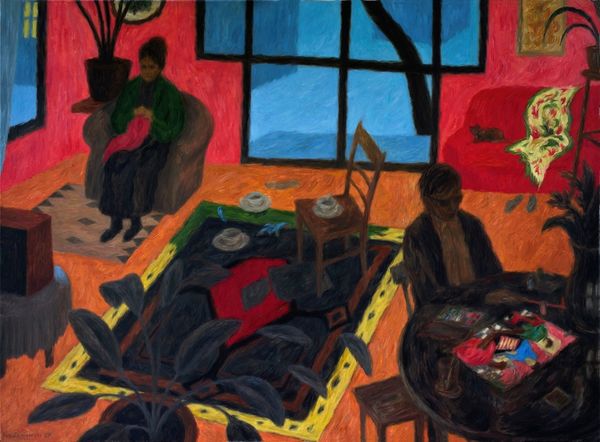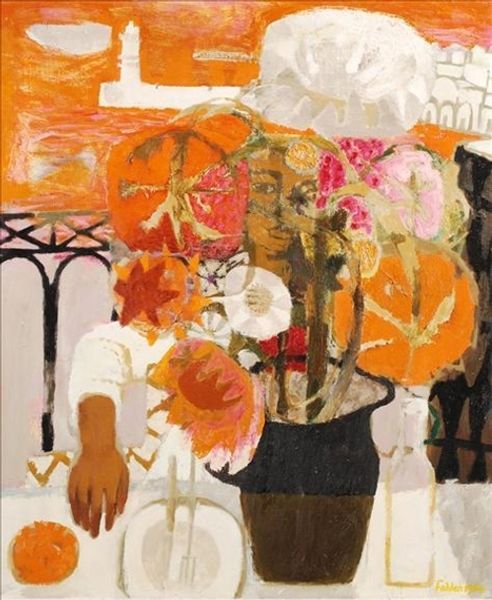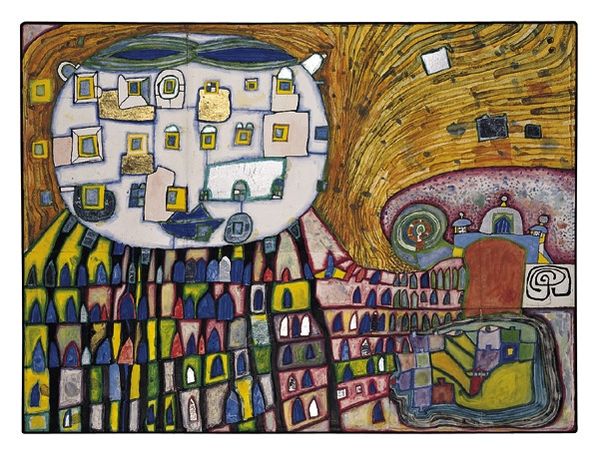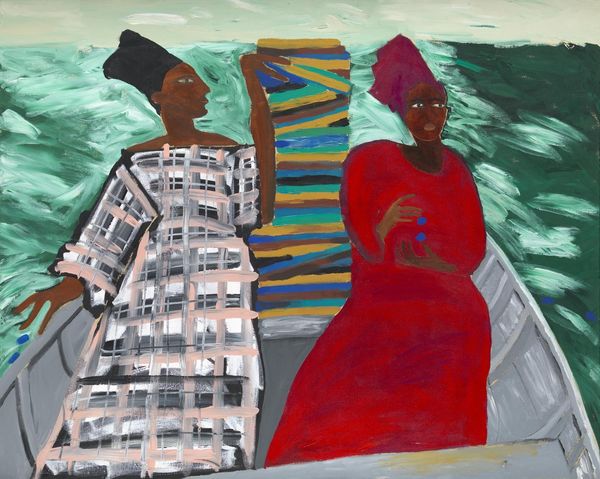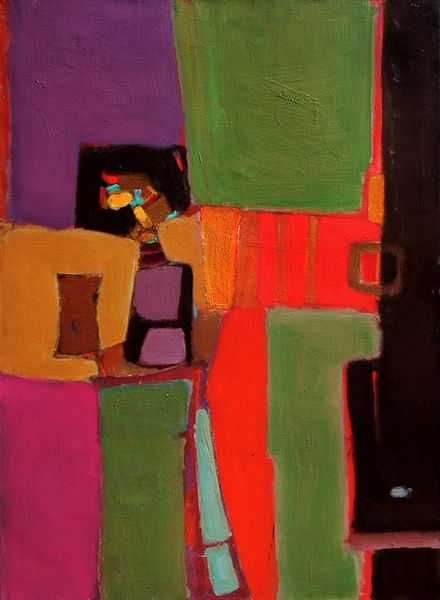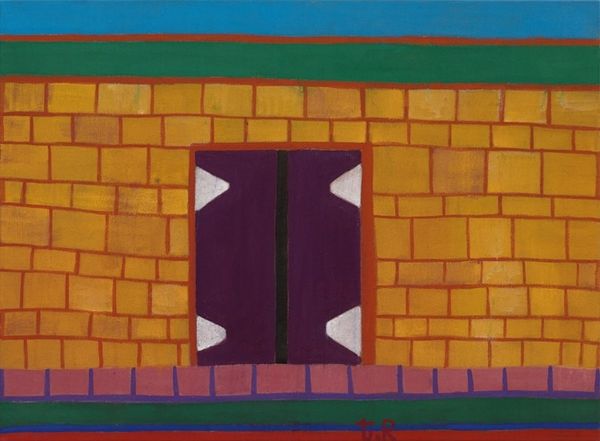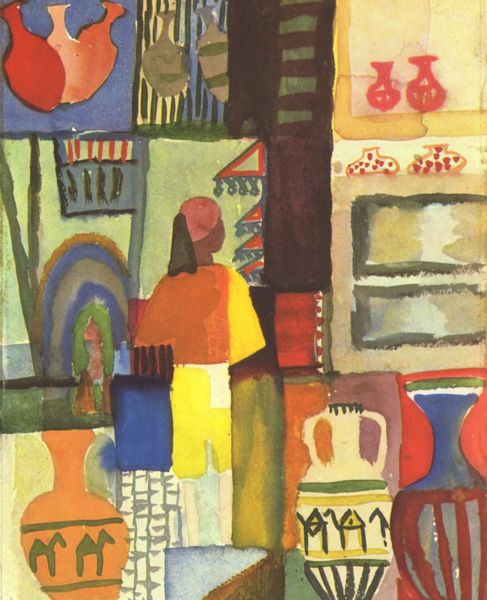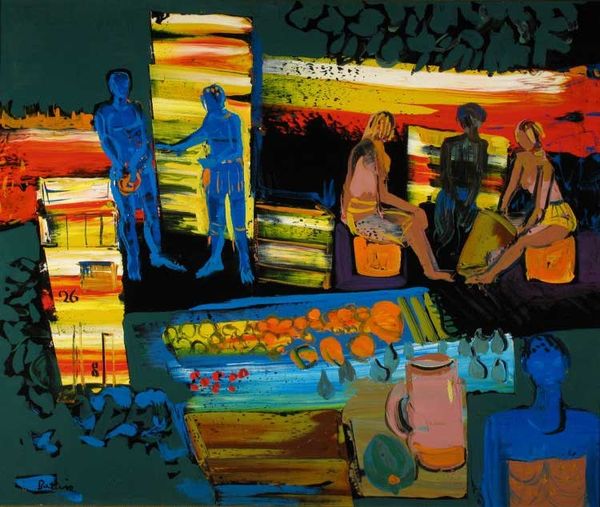
Dimensions: sheet: 75.57 × 56.36 cm (29 3/4 × 22 3/16 in.)
Copyright: National Gallery of Art: CC0 1.0
Editor: This is "Wash Day" by Ulysses Marshall, painted in 1989, using acrylic on canvas. The figures and colors feel so direct, and yet there is something unsettling about the faceless figure. What do you see in this piece? Curator: The lack of facial features in the central figure immediately grabs attention. It invites us to contemplate what is absent, what is hidden. Consider the deeper symbolism: does the obscured face represent a loss of identity, a societal anonymity imposed upon certain groups, or perhaps a universal archetype of the domestic worker? Editor: I hadn't considered that. The focus really was on what's missing rather than what's there. And it's interesting how the laundry drying in the background contrasts with the cooking. It sets the figure in this domestic role. Curator: Precisely. Domestic scenes often carry layers of cultural meaning, reflecting power dynamics, gender roles, and social expectations. The bright colors – almost naively applied – further complicate our interpretation. Do they offer a sense of joy amidst the everyday routine, or perhaps mask a deeper complexity? How does the "primitive" Pop Art style, coupled with figuration and genre-painting, function for you? Editor: It feels like there's a tension between simplicity and underlying social commentary. The vibrant colors draw you in, but the faceless figure hints at something darker. The symbolism of “wash day” evokes renewal, repetition, while the cooking ties her to home. Curator: So we begin to decode the visual language. The emotional weight comes from the historical connotations embedded within these seemingly simple forms. Perhaps these are less naive than carefully rendered. It certainly resonates differently knowing the piece comes from 1989. Editor: Yes, I now appreciate how each element - the obscured face, the colors, and the setting - carries symbolic weight, prompting us to consider themes of identity and representation. Thanks for bringing it to life! Curator: My pleasure. Art is meant to stir those emotions and ask those hard questions. We will probably not all ask them, and we may not like what the answer is. But together, we begin to see beyond the image and uncover those many complex layers.
Comments
No comments
Be the first to comment and join the conversation on the ultimate creative platform.

